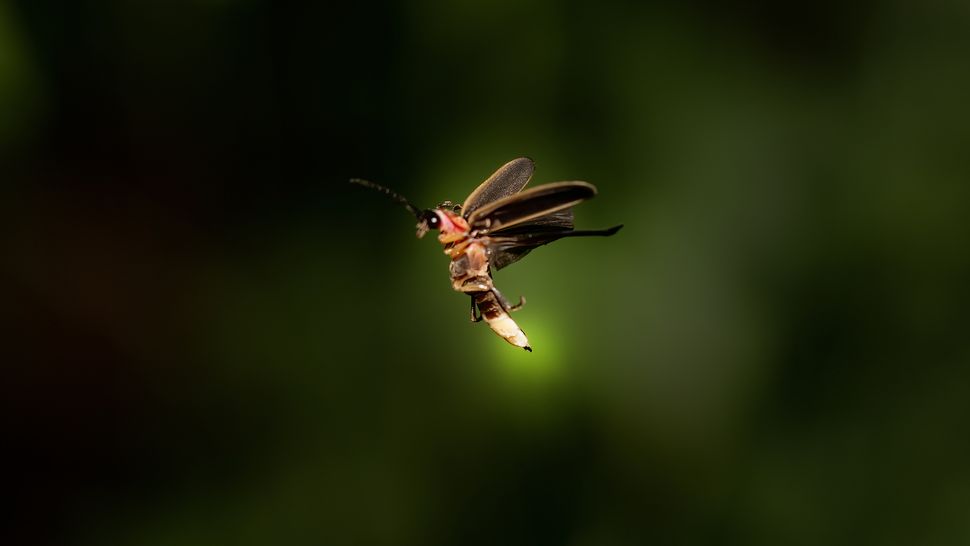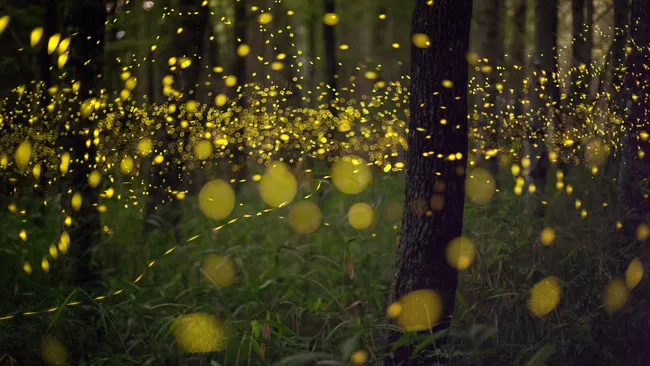Fireflies, also known as lightning bugs, captivate our imagination with their enchanting displays of bioluminescence, a phenomenon that illuminates the night sky during the dusk and darkness of summer evenings. Bioluminescence, the ability to produce light through a chemical reaction, is a fascinating trait found in select organisms across the globe, from deep-sea creatures to luminous fungi. However, it is the fireflies, members of the Lampyridae family comprising over 2,000 species of beetles, that truly steal the show with their mesmerizing glow.
At the heart of the firefly’s luminous magic lies a complex chemical reaction involving a compound known as luciferin. Timothy Fallon, a biochemical geneticist at the University of California, San Diego, explains that luciferin undergoes oxidation, a process of losing electrons, in the presence of adenosine triphosphate (ATP) and magnesium. This reaction is catalyzed by the enzyme luciferase, resulting in the emission of light. Within the firefly’s abdomen, specialized light organs host these chemical reactions, supported by a layer of crystallized uric acid that enhances the reflection and amplification of light.
Remarkably, this system of bioluminescence has independently evolved multiple times in various organisms, underscoring its significance in nature’s repertoire. Similar light-producing mechanisms are observed in other luminous beetles, such as those belonging to the Sinopyrophoridae family.
The study of bioluminescence dates back centuries, with early pioneers like 17th-century Royal Society members beginning to unravel its mysteries. Through painstaking experimentation, scientists discovered the essential role of oxygen in fueling bioluminescent reactions, shedding light on the intricate interplay of biochemical processes underlying this natural phenomenon.
Today, as we marvel at the twinkling spectacle of fireflies dancing in the night, we are reminded of the awe-inspiring beauty and complexity of the natural world. The luminous display of these enchanting insects serves as a poignant reminder of the remarkable adaptations that have evolved over millennia, enriching our understanding of life’s diverse wonders.

The enchanting glow of fireflies begins long before they reach adulthood, as even their pupae and eggs possess the ability to emit light. This early luminescence serves as a warning to potential predators, signaling the presence of toxins such as lucibufagins, synthesized from the fireflies’ diet, rendering them unpalatable. Upon completing metamorphosis and emerging as adults, fireflies develop new light organs, continuing to utilize the same fundamental bioluminescent system found in their juvenile stages.
Within these specialized light organs, cells brim with luciferin, luciferase, and an abundance of mitochondria, which produce the ATP necessary to fuel the luminous chemical reaction. The regulation of oxygen flow to these cells serves as an on-off switch for their bioluminescence—adequate oxygen levels result in a radiant glow, while deprivation of oxygen plunges the fireflies into darkness.
For fireflies inhabiting the U.S. East Coast, bioluminescent signaling plays a crucial role in mate selection, with each species evolving distinct flashing patterns to attract suitable partners. These flashing sequences, akin to Morse code love songs, serve as a means of communication in the quest for reproduction—a race against time given the fireflies’ brief adult lifespan.
While significant strides have been made in understanding firefly bioluminescence, numerous mysteries persist, particularly regarding the genetic underpinnings of this captivating trait. Although the gene responsible for luciferase production was identified in 1985, ongoing research continues to unravel the complexities of firefly genetics. Recent breakthroughs, such as the discovery of additional genes in rare species like Aquatica leii, offer tantalizing insights into the molecular mechanisms governing bioluminescence.
Despite progress in scientific inquiry, much remains unknown about fireflies in their natural habitats. Diminishing populations, habitat loss, and climate change pose significant threats to these luminous insects, underscoring the urgent need for conservation efforts. As firefly numbers dwindle, researchers like Lynn Faust emphasize the importance of understanding their ecological needs to effectively protect and preserve these mesmerizing creatures for future generations to cherish and admire.
